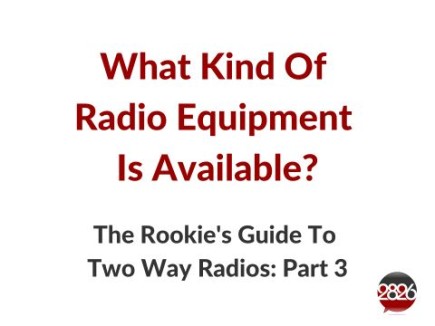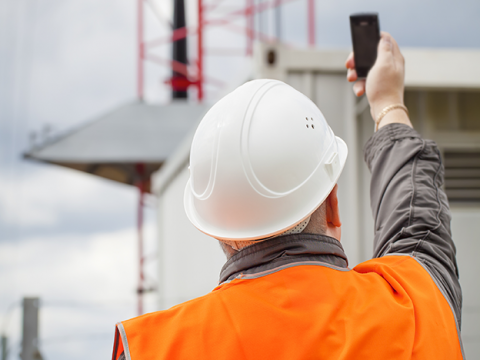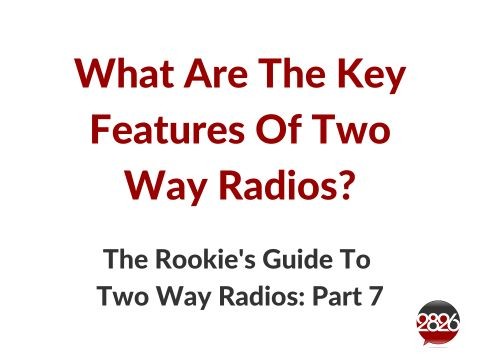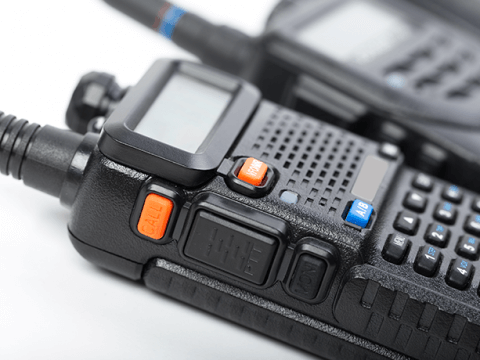The 2826 Rookie's Guide To Two Way Radios: Part 7
What Are The Main Features Of Two Way Radios?
Our infographic outlines some (but not all) of the features and functions of two way radio systems - in general terms. There are numerous features available to users but below is an outline of the main features that most users will need and use and likely use regularly.
Safety and Security Features
One of the key reasons most business uses a two way radio system is for safety, so the safety features are numerous. Here are a few:
-
Lone worker, no movement and man down alarms:
If a lone worker’s activity, movement pattern or location ‘goes quiet’ or that person doesn’t move, an alarm is triggered. Alarms can also be triggered if the position of the radio is greater or less than a pre-agreed angle, or if a radio user goes in to, or out of, a certain area or location.
-
Remote monitoring:
The radio can be put into a transmit mode without the operator’s knowledge, or after an agreed action such as those outlined above. This allows remote assistance in a situation which may have become dangerous or confrontational, or if there is a health and safety emergency.
-
Text or data messaging:
Text or data messaging between display portables and mobiles is a powerful feature with many practical day-to-day applications. Radios without a display are sometimes able to be set up to send quick or pre-programmed texts or status message too.
-
Radio disable and enable:
Many mobile phones include technology to be automatically wiped off data and become disabled if they are stolen. This ‘radio disable’ functionality is the two way radio equivalent.
-
Priority calling
Two way radio systems are designed to improve communication. Depending on the situation this communication may be to individuals or to groups, or a combination of the two. Setting up pre-defined priority channels, groups, and people to call, is a very useful feature that supports both health and safety and operational best practice.
-
Contact books
In a similar fashion to an address book on a mobile phone, contacts can be pre-loaded to ensure ease of use and time savings.
In Summary
In a nutshell, two way radio systems are incredibly powerful and can be deployed in a way to suit a wide range of individual circumstances and combat a wide range of daily challenges. At 2826 our ethos is to ‘sweat the asset’ and, as standard, we ensure that the systems our clients opt for use all available functional capabilities. We'll also make sure you get the most out of your radio system, as standard.
Further Useful Resources
Read more here or why not contact one of our experts to discuss your organisations' communications requirements? We'd love to hear from you.
- What is a radio system?
- Our phased approach
- See how a ‘Managed Services’ Programme makes life easy
- Download our PDF guide below that outlines some of the main features of two way radios...
Related

The 2826 Rookie's Guide To Two Way Radios: Part 3
What radio equipment is available? There is a vast range of equipment available in today's marketplace including mobile radios, portable/handheld radios, repeaters and base stations and headset solutions. Read on to learn about different types of radio equipment.

Maintenance & Support
As two way radio suppliers, 2826 ensure that your two way radio hire is a smooth process, with on hand maintenance and services should you need it.



